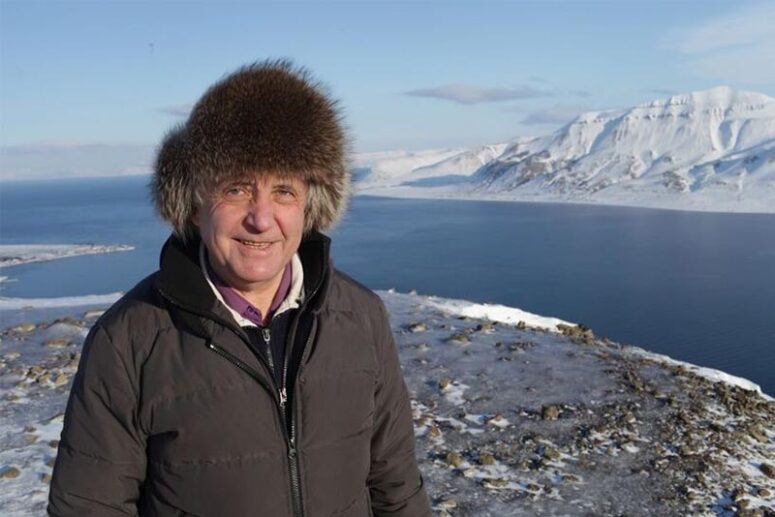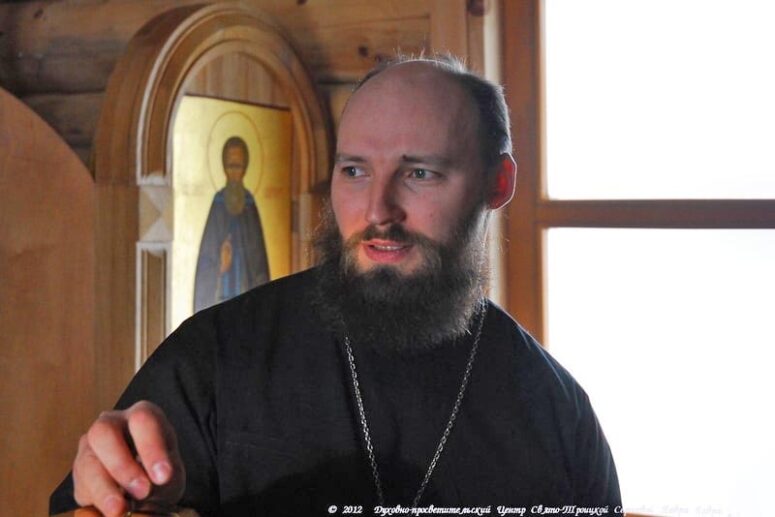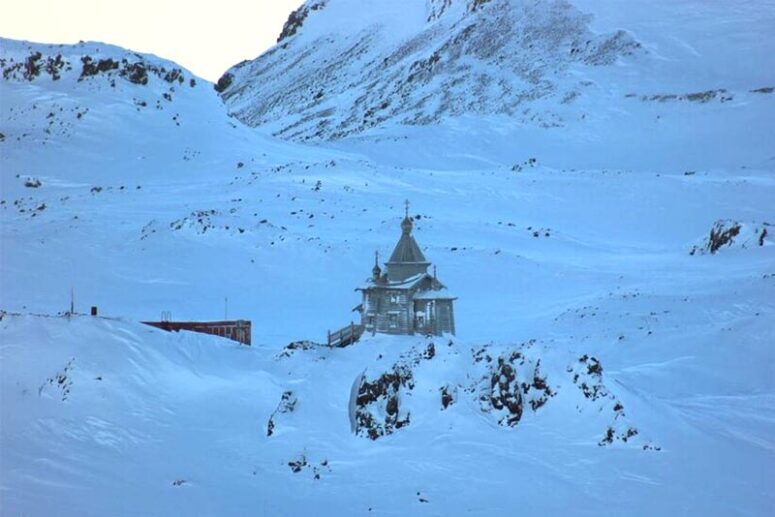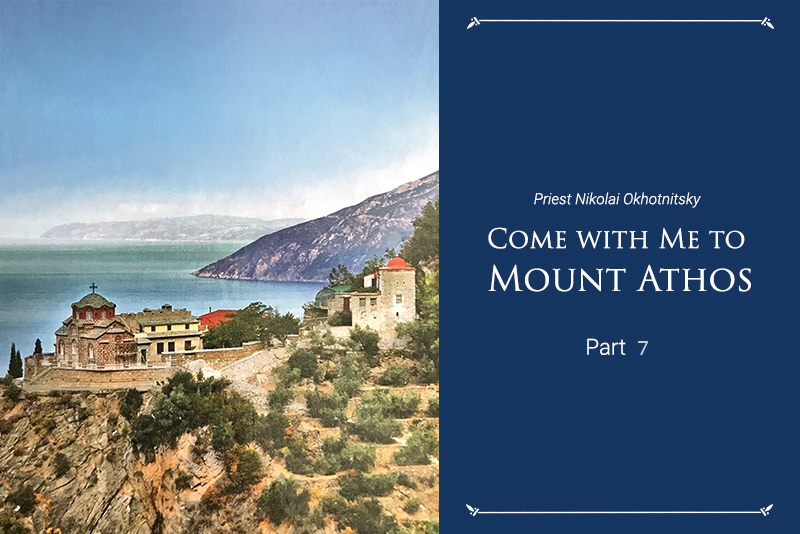
A wooden Orthodox church was consecrated in 2004 in the harsh ice of Antarctica. Since then, the Divine Liturgy has been celebrated year-round in the middle of the white desert at the edge of the earth. What miracles had preceded the building of this church and how does it bring people closer to God? How is the lifestyle of polar explorers similar to a monastic rule? Find out from the stories told in our article.
It All Started with a Miracle
Peter Zadirov had a rare and dangerous profession. He made more than 3,000 parachute jumps in his life: first as a parachute tester, and later as a rescue worker. However, it was the 1012nd jump in the winter of 1981 that he remembered more than any other.
Shortly before that, Peter lost his friend and colleague Vladimir Silenkov, who crashed while performing a test jump. Shortly after the funeral, Zadirov had an unusual dream in which he found himself in the place of his deceased friend falling from the height with an unopened parachute. Seeing a forest and a road beneath him, Peter imagined crashing into it in a few seconds. Suddenly he noticed a dark spot below, in which he recognized his mother who took an Orenburg down shawl off her shoulders and spread it out at both ends like the Virgin Mary on the icon of the Intercession. Peter fell right into this soft fabric and immediately woke up.

The parachute tester did not pay much attention to this dream until his jump on February 12, 1981. On that day, the weather did not permit a jump from an altitude of 1,200 meters, but the new parachute system had to be tested as soon as possible. When Peter took the risk and made a jump from 800 meters, his unusual dream occurred in real life. His main parachute did not open, and the lock of the reserve one froze. Peter tried to heat the lock grooves with friction, and then pulled the ring, but the parachute had barely opened when he felt the muffled thump of a landing. Contrary to his own expectations, he did not die or even lose consciousness. The parachutist landed in a huge pile on the edge of the runway, formed by a snowplough. At the hospital, they found only a bruise on his right hip. “Clearly, it was not the snow that saved me. No snowbank can save you from falling 800 meters,” he said, recalling the incident. “I was rescued by my mother’s prayer. The fact that I survived was most certainly a miracle of my mother’s faith.”
A few years later, in memory of his mother and this miracle, Peter decided to build a church in honor of St. Nicholas the Wonderworker in his native Orenburg region. In ten more years he built the first Antarctic church more than 16 thousand kilometers away from home.
Genesis of the “Insane Notion”
Antarctica was first discovered in the winter of 1820 by the Russian naval officer Thaddeus von Bellingshausen. Since then there have been many scientific expeditions to the white continent. At one time there were seven Russian drifting stations operating in Antarctica. Today there are five, one of which is named “Bellingshausen” after the famous explorer. Russian travellers have a long-standing tradition of sanctifying newly discovered places with orthodox chapels and churches, but this was not the case with Antarctica, since the first scientific expeditions came here during the Soviet anti-religion era. It was not until the beginning of the 21st century that Peter Zadirov and his friend Valery Lukin, head of several Arctic and Antarctic research stations, came up with an outlandish idea of building a church in the coldest place on earth. “Over the years of research, sixty-four Russian polar explorers died here, so the church, among other things, is also homage to the fallen,” Zadirov said.

After his fateful jump, Peter Zadirov devoted his life to polar stations, founding the Center for Aerial Parachute Expeditionary Work to support hard-to-reach polar stations in the Arctic and Antarctic.
While talking with his friend, Peter realised that life in Antarctica with its severe working conditions lacked something that would fill the grey harsh climate with joy, namely, fellowship with God. Besides, over the many years no single liturgy had been celebrated in Antarctica, offering prayers for the dead, and that needed to be changed. On top of that, by the end of the 1990s the Russian Bellingshausen station was on the verge of closure, and the polar explorers hoped that the appearance of the church and Liturgy would change the situation.
Construction and Consecration
Peter and Valery took a blessing from Patriarch Alexy II and began collecting donations for the construction of the church. Over the three years of fund-raising, the church bells were cast and the iconostasis was prepared by artists from Palekh. In 2002, a cross was erected on the site of the future church on Mount Irina, above the Bellingshausen station. On January 25 of the same year, a Divine Liturgy was first celebrated in Antarctica, praying for all the polar explorers who had perished here.
Finally, in 2004 the construction began. The wooden church was cut down and assembled in Altai. The materials used were cedar and larch, which become as strong as metal over time to endure the harsh Antarctic frosts and hurricane winds. Then the church was disassembled, with the logs numbered and transported by ship to King George Island (Waterloo) in Antarctica, where the Russian Bellingshausen station is located. In a few months, the church was assembled without a single nail and secured from the inside with steel chains to make it more stable on the cliffs. To avoid legal complications, it was formally registered as a mission of the Holy Trinity Sergius Lavra.

Peter Zadirov planned to consecrate the church (as he had already done in his homeland) in honor of St. Nicholas the Wonderworker, the patron saint of sailors and travellers. But God arranged things differently. The first Divine Liturgy, celebrated at the Bellingshausen station before the construction of the wooden church, was served in a plain metal container. The only icon on the table used as the altar was a small plastic image of St. Andrei Rublev’s Holy Trinity. Shortly before the service, this icon had been purchased in a Catholic shop in Punta Arenas, Chile by one of the construction sponsors travelling to Antarctica. This was seen as an omen, and the Antarctic church was subsequently consecrated in honor of the Holy Life-Giving Trinity.
The consecration was performed on February 15, 2004 by Bishop Feognost (Guzikov), who was then vicar of the Trinity Sergius Lavra. Hieromonk Kallistrat (Romanenko) became the first serving priest in this church. Later, Father Kallistrat was chosen to be Bishop of Gorno-Altai and Chemal. But he did not leave his pastoral care of this church, and to the present day, Vladyka personally appoints priests to serve in Antarctica.
Changes in Life of Polar Explorers
Surprisingly enough, it was in Antarctica that many polar explorers first came to God. On the next day after the church was consecrated, the Sacrament of Baptism was administered. The first to be baptized were the head of the Bellingshausen station, Oleg Sakharov, and the driver-mechanic Alexander Solovyov.
Oleg Sakharov later said that during difficult winter seasons and long polar nights, the station workers needed a place where they could come at any time to relieve their stress: “The church, whose warmth could be felt even by touching its logs, became such a place.”

The Holy Trinity Orthodox Church immediately became the most beautiful and most visited place in Antarctica. Other denominations on the South Pole have only prayer rooms or chapels in metal containers, where people live. Regular worship services are not performed there. Church of the Holy Trinity, where liturgies are served all year round, has become a retreat for many people of different nationalities working in Antarctica.
One of them is the Chilean Eduardo Aliaga Ilabaca who found God on the sixth continent after witnessing an amazing event that took place during the consecration of the church. At the time of the Divine Liturgy, three broad rays of sunlight shone through the clouds covering the sky, as a sign, or a blessing of the Holy Trinity. This miraculous apparition along with the beauty of the service and the clear sense of God’s presence influenced Eduardo, who soon embraced Orthodoxy, joined the church choir and became one of the most zealous parishioners. In 2007, the first wedding at the Trinity Church took place, when Eduardo married the daughter of a Russian polar explorer.

After spending a winter in Antarctica, Hieromonk Gabriel (Bogachikhin) recalled once inviting foreign polar explorers to the Easter service. Visitors from Uruguay and China were then joined by polar explorers from the distant Argentine station who had bravely sailed across the stormy sea.
Father Gabriel said that although the foreigners had little understanding of the service, their faces showed that they were imbued with a prayerful mood. The Chinese researchers stood for the entire night Liturgy, and the priest’s proclamation “Christ is Risen!” was answered in broken Russian with a joyful “Truly He is Risen!”
Most importantly, the Church of the Holy Trinity lived up to the hopes of the polar explorers and saved the Bellingshausen station from closure, in part because it became the main local attraction, attracting many tourists. Deacon Maxim Gerb wrote in his notes: “Many interesting people visit our church. Recently we had a visit from Tom Hanks, who was passing by our island on his yacht. He is a very open and friendly person. After he lit candles, I invited him to come up to the bell tower. Now I can testify that Forrest Gump has been to Antarctica and is quite good at ringing church bells now.”

Priestly Ministry in Antarctica
Ever since its consecration, the Antarctic church is continually living the liturgical life. For this purpose, an appointed hieromonk from among the Lavra brethren or a priest from one of the dioceses of the Russian Orthodox Church comes here with an assistant on a year-long mission with Russian polar explorers. Just like all other station employees, they are required to pass a medical examination and to be trained to help with the construction. They are officially registered with the expedition as construction and repair workers. Divine services in Antarctica are held only on Saturdays, Sundays, and holidays, while during the rest of the time the priest works at the station together with everyone else.
Olga Stefanova, a journalist and documentary filmmaker, shared her thoughts about how the presence of a priest affects the lives of polar explorers: “When a priest lives near you and you see at least two religious people trying to observe fasts even in Antarctica, you notice how they behave under conditions of impending conflicts, how they bring people together, perform emergency works, and celebrate church holidays – it turns you toward God.
A lot depends on the personality of the priest with whom you winter. Father Sergius Yurin, a former airborne trooper and a man of polar spirit, served at my wintering ground. People were naturally drawn to him. He was the “epicentre” of our life. If he called us to a service, half of the station workers would come; at Easter and Epiphany there were huge processions.”

Archpriest Sergius said in an interview that ecclesiastical life in Antarctica is not like that on the mainland. For example, there is no choir or any assistants. “I serve myself, I sing myself, I bring the censer to myself.” According to Father Sergius, in Antarctica he encounters more “unchurched” people than believers. Each of them requires a personal approach. During his wintering Father Sergius baptized several people, mostly tourists, and helped one Chilean Catholic convert to Orthodoxy. By the way, baptisms on the sixth continent are performed right in the cold ocean. For all the unfamiliarity of the surroundings, the priest admitted that life in Antarctica was very much to his liking: “For me personally, the only thing missing is my family. Otherwise I would not want to leave these special people and return to the hustle and bustle of ‘normal’ life”.
God Seems Closer
The International Antarctic Treaty states that the South Pole officially belongs to no one. This makes it the only land on the planet owned by God rather than by man. The polar explorers confirm that in Antarctica God is very close and hears you immediately.
Olga Stefanova says that, in her experience, during the first three months of wintering one stays in euphoria from meeting new people and discovering the area. However, people’s shortcomings eventually begin to show, and these need to be fought in order to get along with others, which seems to be the toughest part.

Under these conditions, the church becomes a place where people find comfort. To get there, one has to climb the Irina mountain, which often involves overcoming blizzards, wind, and the reluctance to walk in the darkness and freezing cold. If you overpower yourself and make it to the church, where there is silence and serenity, you can sit down in a dark corner and say a prayer — God will hear it immediately. You will notice it on your way back, when a difficult, hopeless situation suddenly turns out to be easily solvable. This is how good the “audibility” between man and God is here.
Christian Principles of Polar Life
People travelling to the sixth continent voluntarily undertake a certain asceticism. It involves leaving home and family, stepping out of the comfort zone into absolute isolation, where all your inner qualities are revealed in various trials and dangers.
Polar explorers of different nationalities live in friendship, often visiting and selflessly helping each other. Clergymen and ordinary believers with polar experience say that there is an unspoken code in Antarctica, which is based on perfectly Christian principles of love for one’s neighbor. It focuses on living peacefully, not quarrelling over minor matters, and being patient to difficulties, as well as traits of other people’s characters.
The way of life in Antarctica is often compared to that of a monastery. Hieromonk Pavel Gelyastanov once said that Waterloo Island reminded him very much of Mount Athos: “Each station is a kind of monastery with its own rules, abbot, brethren, property and territory. All of them are characterised by well-organised labour and voluntary discipline. Polar explorers say that they never lock their station houses, because no one steals. Anyone caught up in bad weather can find shelter and food in any house. Whatever happens to you, everyone is always willing to do his best to help a friend in need.

Antarctica is a completely different world. Anyone who has discovered its spirit wants to go back to that distant cold continent, where social status, fashion and money are not important, and where the only thing that matters is what kind of person you truly are.
An Orthodox church, harmoniously blending into the polar landscape, has become a beacon for those seeking the truth and meaning of life, a message for the uncertain and a consolation for the suffering.





Is there a fund for donations to the Antarctic Mission?
Dear Peter, unfortunately, there is no such fund yet. But you can contact Olga Stefanova personally via email (olga_stefanova@list.ru). Olga will be glad to cooperate in any way! We wrote about her in the article. She is the author of the big project “Memory of Antarctica” and is closely cooperate with the Antarctica Mission. They are working on creating a fund, but not everything is ready yet. By the way, in February 2024 the 20th anniversary of the consecration of the Church in Antarctica will be celebrated. And you can financially support this good deed, if you like.
Amazing!
So wonderfully encouraging.
Thank you so much for this very interesting and well written article, i really enjoyed it
Christ is King!
Thank you so much for sharing this touching and faithful story on the wooden, but beautiful church. Let people find solace there. We pray for more blessings in Antarctica.
How delightful!